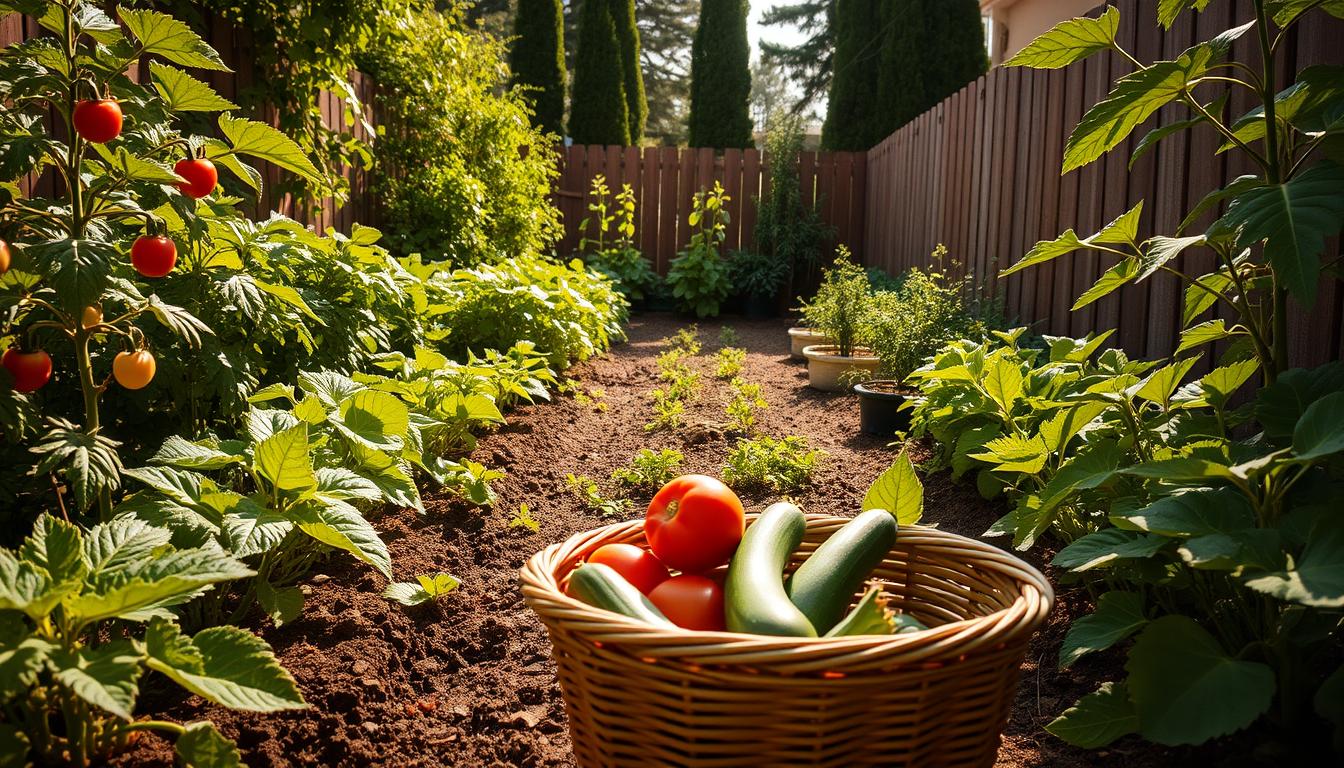Small-scale agriculture is gaining popularity, especially in urban areas. With limited space, many are turning to gardening as a way to grow fresh vegetables and earn extra income. According to USDA statistics, home food production has seen a significant rise in recent years.
Success stories from Texas A&M AgriLife Extension highlight how efficient gardening techniques can yield impressive results. Whether you’re working with a small plot or a container garden, the right plants can make all the difference.
This guide combines space efficiency with high-value plant selection. It’s designed to help you maximize your garden’s potential, offering both fresh food and supplemental income. From traditional vegetables to niche market options, there’s something for every grower.
Modern techniques, rooted in historical practices from resources like the Farmers’ Bulletin 934, ensure your garden thrives. With an 8-step system, you’ll learn how to make the most of your soil, seeds, and growing season.
Key Takeaways
- Small-scale gardening is a growing trend in urban areas.
- USDA data shows increased interest in home food production.
- Efficient techniques can yield both fresh food and extra income.
- This guide includes traditional and niche market plants.
- An 8-step system helps maximize garden profitability.
Why Grow Backyard Crops?
Growing your own food at home is more than just a trend—it’s a lifestyle shift. Fresh produce from your garden contains 30% more nutrients than store-bought options, according to the Farmers’ Bulletin 934. This means healthier meals for your family and a better way to enjoy the growing season.
Financially, it’s a smart move too. A Texas A&M study found that the average family saves $600 per year by growing their own vegetables. Imagine what you could do with that extra cash!
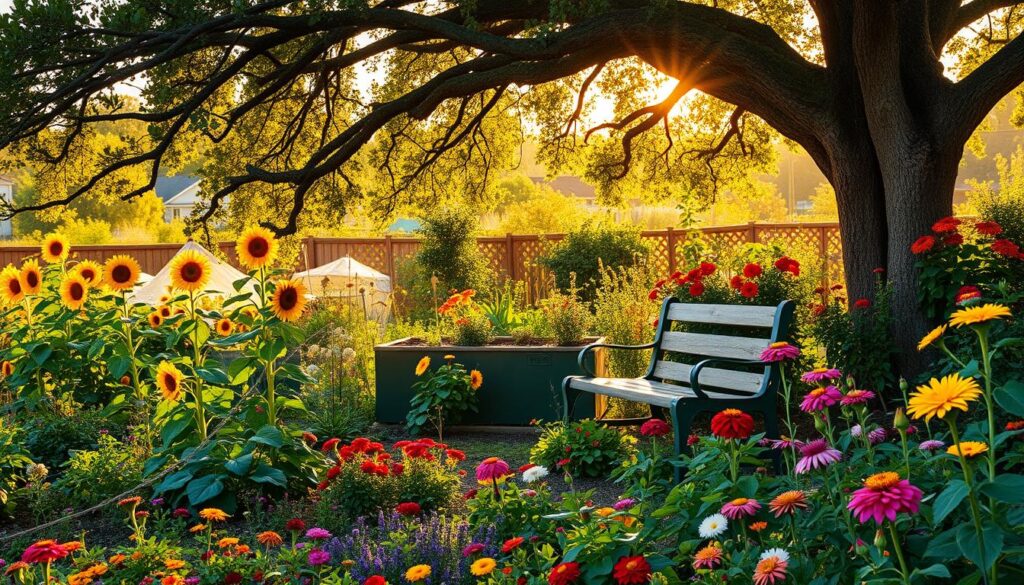
Gardening also offers peace of mind. During uncertain times, having a reliable source of food can be a lifesaver. Crisis gardening has proven to be a practical solution for many families, ensuring they have access to fresh produce no matter what.
Beyond the practical benefits, gardening is good for your mental health. Cornell University research shows that 85% of gardeners report reduced stress levels. It’s a therapeutic way to connect with nature and unwind after a busy day.
Environmentally, home gardens make a big difference. They reduce food miles and packaging waste, making them a sustainable choice. Plus, USDA data highlights that home gardens use fewer pesticides, creating a healthier ecosystem.
Even in urban areas, gardening is possible. Successful container gardens have shown that you don’t need a lot of space to grow your own food. Companion planting, as researched by WVU, can also boost your garden’s productivity naturally.
Ready to start? The Old Farmer’s Almanac offers a 7-day free trial for their garden planner, making it easy to organize your planting schedule. Whether you’re a beginner or an experienced grower, there’s no better time to start your garden journey. Learn more about how to start a garden today!
Choosing the Right Backyard Crops
Maximizing your garden’s potential starts with choosing the best vegetables. Whether you’re working with a small plot or containers, selecting high-income plants can make a big difference. From microgreens to heirloom tomatoes, the right choices can boost both yield and profits.
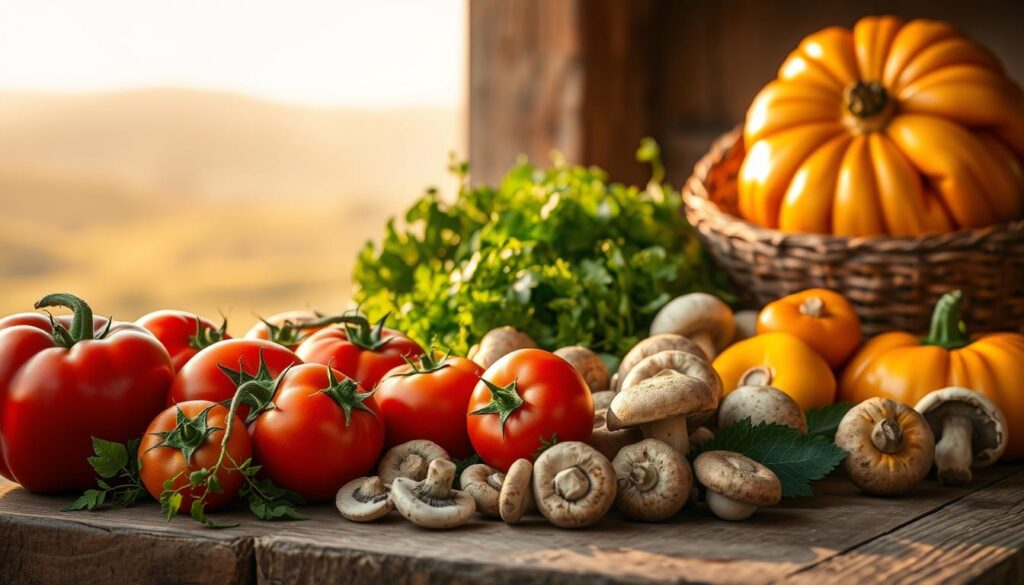
Top High-Income Crops for Small Spaces
Some plants are more profitable than others, especially in limited areas. Here are the top earners:
- Microgreens: These tiny greens generate up to $50 per square foot, making them a top choice for urban growers.
- Dwarf Tomatoes: With yields of 15 pounds per plant, they’re perfect for small gardens.
- Bell Peppers: Each plant can bring in $25, according to Pennington growth trials.
- Gourmet Lettuce: High demand and quick growth make it a profitable option.
- Pole Beans: Vertical growing systems maximize space and yield.
Factors to Consider When Selecting Crops
Choosing the right plants involves more than just profit potential. Here are key factors to keep in mind:
- Space: Opt for compact varieties like dwarf fruit trees or container-friendly options.
- Weather: Use USDA hardiness zone maps to pick plants suited to your climate.
- Soil: Test your soil and amend it as needed for optimal growth.
- Time: Decide between quick-turn crops like radishes or perennials like herbs.
- Pest Resistance: Choose varieties recommended by Texas A&M for fewer pest issues.
By considering these factors, you can create a thriving garden that’s both productive and profitable. Whether you’re growing tomatoes, peppers, or lettuce, the right choices will ensure success.
Preparing Your Backyard for Planting
Getting your garden ready for planting is the first step to a successful harvest. A well-prepared foundation ensures your plants thrive from the very beginning. Focus on two key areas: soil preparation and location selection. These factors directly impact your garden’s productivity and health.
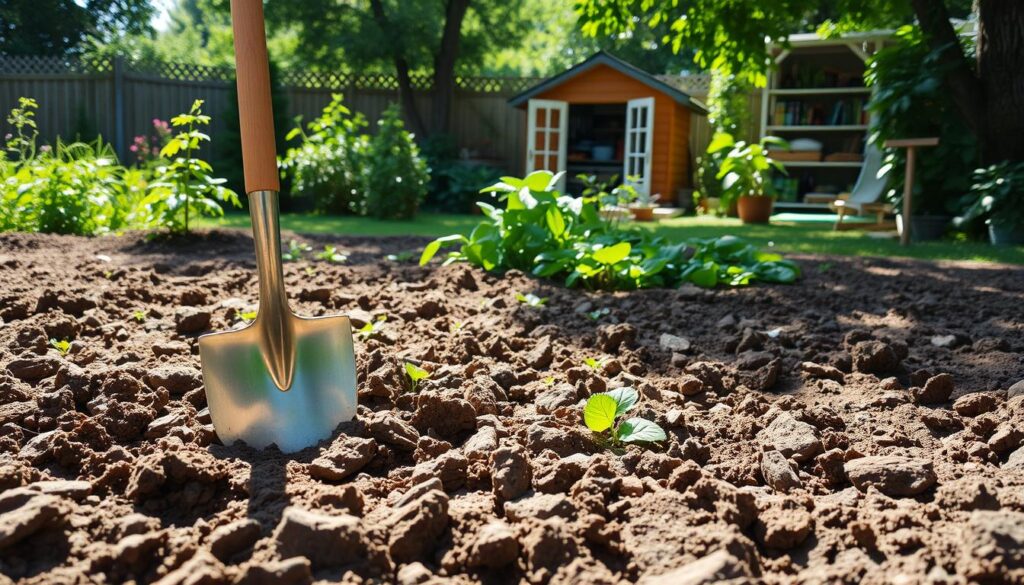
Soil Preparation and Enrichment
Healthy soil is the backbone of any successful garden. Start by testing your soil’s pH level. Most vegetables thrive in soil with a pH between 6.0 and 7.0, according to UMN Extension. Local extension services can help with accurate testing.
Next, enrich your soil with organic amendments. Compost and worm castings are excellent choices. Compost improves soil structure, while worm castings add essential nutrients. Both options support strong root development and plant growth.
Consider raised beds for better results. Rodale Institute trials show that raised beds can increase yields by 30%. They also improve drainage and reduce pest issues, making them ideal for small spaces.
Choosing the Right Location
Location is just as important as soil quality. Look for a spot with plenty of sunlight. South-facing slopes receive 15% more sun, as noted by the Old Farmer’s Almanac. This extra light boosts plant growth and productivity.
Ensure your garden has proper drainage. Clay soils can benefit from French drains or raised beds. For sloped areas, use erosion control methods like terraces or ground cover plants.
Finally, integrate pollinator habitats into your design. Native flowers attract bees and butterflies, which help your plants thrive. A well-planned garden not only produces food but also supports the local ecosystem.
Planting Your Backyard Crops
Timing and technique are crucial for a thriving garden, especially in limited spaces. Knowing when to plant and how to maximize your area can make all the difference. Whether you’re working with seeds or seedlings, the right approach ensures a bountiful harvest.
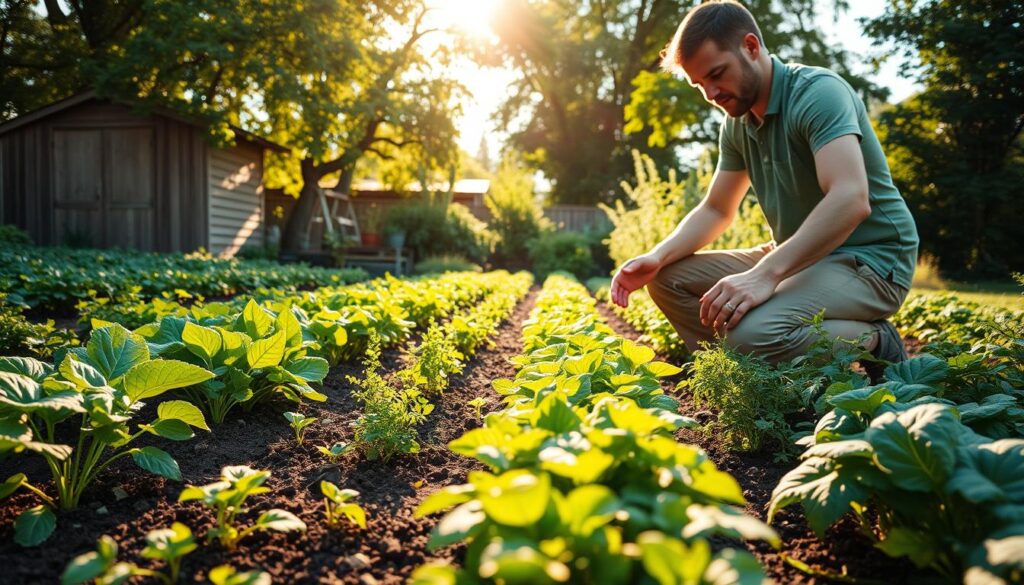
When to Plant Different Crops
Planting at the right time is essential for success. For example, tomato transplants need soil temperatures of at least 55°F, as noted by Cornell guides. Use frost date calculators to create a planting calendar tailored to your region.
Succession planting is another effective strategy. By staggering plantings every 2-3 weeks, you can extend your harvest throughout the season. This method works well for fast-growing vegetables like lettuce and radishes.
Cold frames and row covers can help extend the growing season. These tools protect plants from early frost and allow you to start planting earlier in the spring.
Planting Techniques for Small Spaces
Square foot gardening is a game-changer for small areas. Mel Bartholomew’s research shows it can increase yields by up to 5x. This method involves dividing your garden into 1-foot squares, each dedicated to a specific plant.
Vertical gardening is another space-saving technique. Use trellises or cages for crops like cucumbers and beans. This approach maximizes vertical space and keeps your garden organized.
When planting, pay attention to seed depth and spacing. Different crops require varying depths, so follow guidelines for each type. Tools like the Garden Planner can help calculate optimal spacing for your plants.
For those interested in preserving heirloom varieties, Fern Bradley’s techniques are invaluable. Proper seed storage ensures you can replant your favorite varieties year after year.
Finally, consider moon phase planting, a tradition from the Old Farmer’s Almanac. Some gardeners believe planting during specific moon phases can improve growth and yield.
Maintaining Your Backyard Garden
Keeping your garden healthy requires consistent care and attention. Proper watering, fertilizing, and pest control are essential for thriving plants. With the right techniques, you can ensure your garden remains productive and vibrant throughout the growing season.
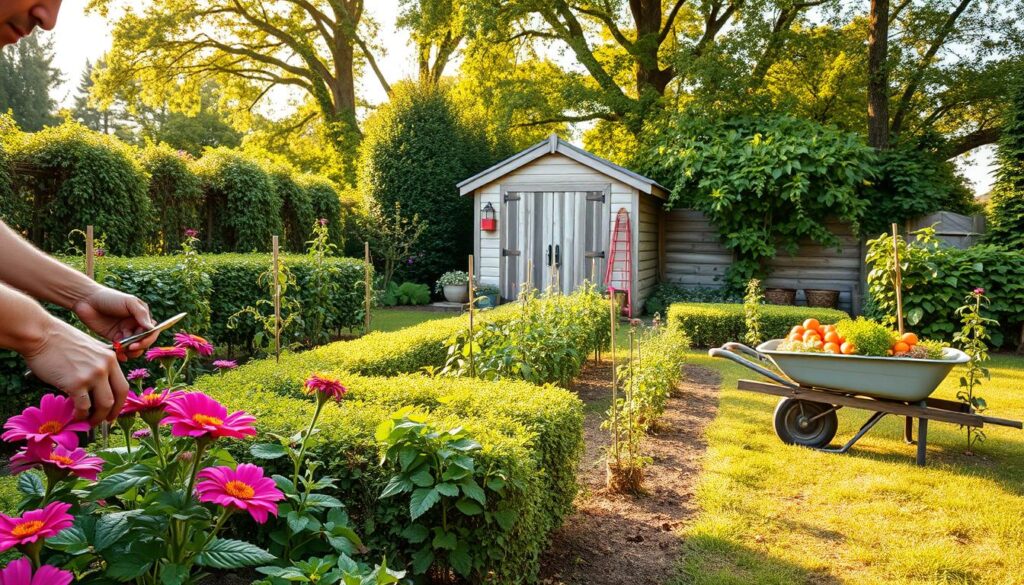
Watering and Fertilizing Tips
Water is a critical resource for your plants. According to USDA research, drip irrigation systems can reduce water use by 50%. These systems deliver water directly to the roots, minimizing waste and maximizing efficiency.
Fertilizing is equally important. Rodale trials show that foliar feeding can increase yields by 20%. Use organic options like compost tea or kelp meal to nourish your plants naturally.
“A well-designed irrigation system ensures your plants get the water they need without overuse.”
Pest Control and Disease Prevention
Pests and diseases can quickly damage your garden. Penn State research highlights that neem oil can control over 200 pest species. This natural solution is safe for your plants and the environment.
Implement Integrated Pest Management (IPM) strategies. Use trap crops like nasturtiums to divert pests away from your main plants. Regularly prune your plants to prevent diseases and improve air circulation.
| Maintenance Task | Best Practices | Benefits |
|---|---|---|
| Watering | Use drip irrigation with zone controls | Reduces water use by 50% |
| Fertilizing | Rotate organic fertilizers like compost tea | Increases yields by 20% |
| Pest Control | Apply neem oil and use trap crops | Controls 200+ pest species |
| Disease Prevention | Prune plants and monitor soil moisture | Reduces disease risk |
By following these tips, you can maintain a healthy and productive garden. Consistent care ensures your plants thrive, even in challenging weather conditions.
Harvesting and Selling Your Crops
Turning your garden’s bounty into profit requires careful planning and smart strategies. Knowing when to harvest and how to sell your produce can make a significant difference in your earnings. From leafy greens to heirloom tomatoes, each plant has its peak time for picking.
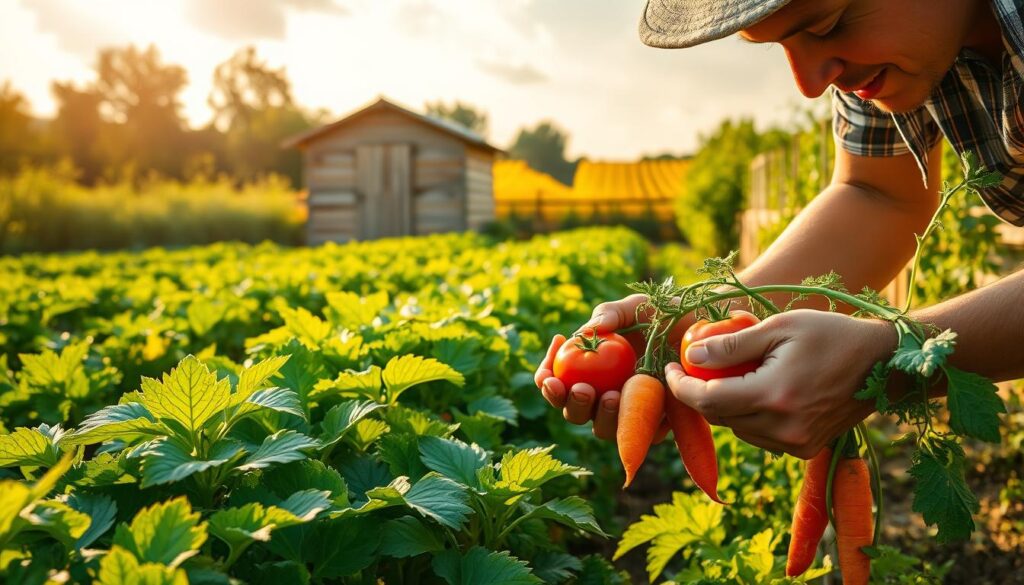
When and How to Harvest
Timing is everything when it comes to harvesting. Leafy greens, for example, lose 30% of their nutrients if picked too late, according to UMN research. Use ethylene indicators to identify the perfect moment for picking. This ensures your vegetables stay fresh and nutritious.
Proper washing and packaging are also crucial. Clean your produce gently to avoid bruising, and use breathable containers to maintain freshness. These steps are essential whether you’re selling at a farmers’ market or directly to customers.
Marketing Your Garden Produce
Selling your harvest can be just as rewarding as growing it. Farmers’ markets offer an average markup of 40%, as noted by USDA ERS. This makes them a great option for small-scale growers. Additionally, CSA memberships provide upfront payments, giving you financial stability throughout the season.
Here are some effective strategies to maximize your sales:
| Strategy | Details | Benefits |
|---|---|---|
| Value-Added Products | Create herb salts, pickled vegetables, or jams | Increases product variety and appeal |
| Social Media Marketing | Promote your produce on platforms like Instagram | Builds direct relationships with customers |
| Consignment Deals | Partner with local grocers or restaurants | Expands your market reach |
| SNAP-Approved Markets | Participate in markets accepting SNAP benefits | Accesses a wider customer base |
Don’t forget to leverage resources like the USDA’s “Know Your Farmer” program. These tools can help you connect with your community and grow your business. For more tips on starting your garden journey, visit NewGen Living.
Conclusion
Transforming your garden into a source of income and fresh produce is easier than you think. By following the 8-step system, you can maximize your space and yield, whether you’re growing vegetables or experimenting with advanced techniques like hydroponics.
Start small with Texas A&M’s 10×10 model to build confidence and track your progress. Keeping detailed records helps you refine your approach each season, ensuring continuous improvement. Advanced methods, such as vertical gardening or microgreen production, can further boost your profit.
Engage with your community through master gardener programs or extension service workshops. These resources not only provide valuable knowledge but also connect you with like-minded individuals. Additionally, don’t overlook tax deductions for home business expenses—every dollar saved adds to your success.
As you grow, you’ll find immense satisfaction in food self-sufficiency. For more guidance, explore resources from institutions like Texas A&M and the USDA. Your garden journey is just beginning, and the possibilities are endless.

